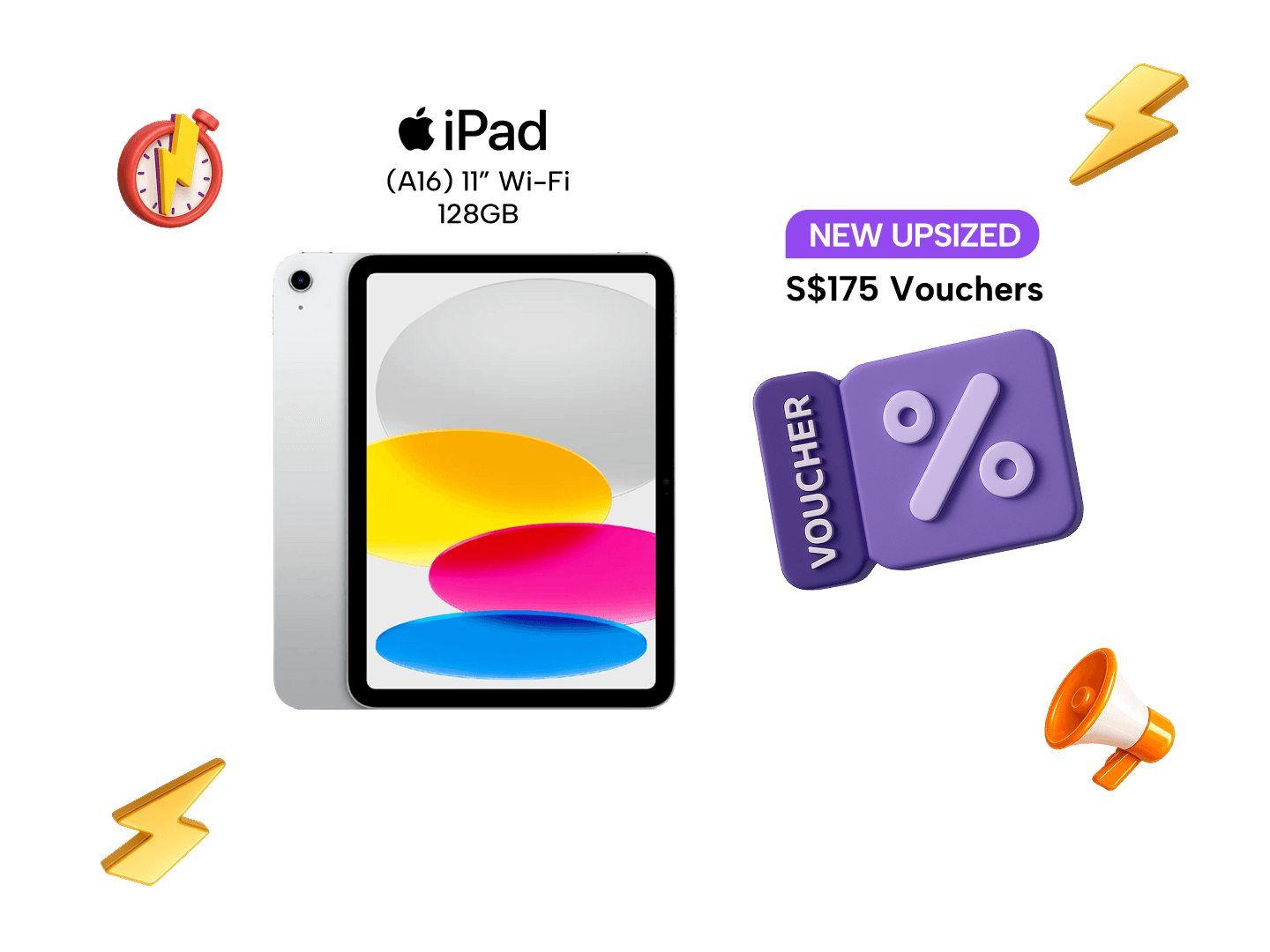How to Buy Gold in Singapore and Add it to Your Investment Portfolio
Updated: 26 Nov 2025
Wondering how to buy gold? Explore options like bullions, stocks, funds, and futures. Learn their pros and cons and how you can invest in them.

The information on this page is for educational and informational purposes only and should not be considered financial or investment advice. While we review and compare financial products to help you find the best options, we do not provide personalised recommendations or investment advisory services. Always do your own research or consult a licensed financial professional before making any financial decisions.
Saver takeaways
-
You can buy gold in Singapore through various channels, including online brokerage accounts.
-
Investment options include physical gold (like gold bars and coins) or gold-related investments, such as stocks, mutual funds, and ETFs.
-
While gold can be used to hedge against inflation, it might not experience the same growth as traditional stocks.
Gold: the ultimate safe-haven asset? It's been a store of value for centuries, and many investors turn to it during times of economic uncertainty. But how exactly can you invest in gold in Singapore? Let's explore the options.
Gold tends to be labelled a 'safe haven' asset because it tends to hold its value during times of inflation and economic turmoil. Unlike currencies, which can be printed endlessly, gold has a limited supply, making it a good hedge against inflation. There are various ways to invest in gold, from owning physical gold bars to investing in gold-related financial instruments like stocks and funds.
⚡SingSaver x IG Markets Flash Deal⚡
Get an upsized S$100 eCapitaVoucher or S$50 Cash via PayNow when you open an IG Markets account and make a min. deposit of S$1,000 and make at least 2 trades within 30 days of opening your account. Valid till 30 November 2025. T&Cs apply.
Also, receive S$218 Cash Bonus when you also make at least 2 trades (from S$1) by end of promo period. Valid till 30 November 2025. T&Cs apply.
How do you buy gold in Singapore?
There are two main ways to invest in gold: physical gold and "paper" gold. Physical gold refers to owning gold bars, coins, or jewelry. Paper gold refers to owning gold-related investments, such as stocks, exchange-traded funds (ETFs), and mutual funds.
Before diving in, consider these factors:
-
Liquidity: How easily can you buy and sell your gold investment?
-
Fees: What are the costs associated with buying, storing, and selling gold?
-
Storage: Where will you securely store your physical gold?
-
Risk: What are the risks associated with each investment type?
1. Physical gold
Gold bullion (bars and coins)
Imagine holding a gleaming gold bar in your hands, the weight of its value a reassuring presence. That's the allure of gold bullion — owning actual gold in its purest form, typically as bars or coins. It's the classic image of gold investment, conjuring up thoughts of treasure chests and ancient empires.
Pros
Can be used to hedge against inflation
No counterparty risk (you own the physical gold)
Cons
Requires secure storage (e.g., safety deposit boxes)
Lower liquidity compared to paper gold
Where to buy in Singapore?
-
Banks: UOB Gold Bullion.
-
Bullion dealers: BullionStar, GoldSilver Central.
Gold jewellery
Gold jewellery isn't just a fashion statement; it can also be a form of investment. Think of it as a way to wear your wealth, enjoying the beauty of gold while potentially benefiting from its value appreciation.
Pros
Dual purpose (wearable and investment potential)
Accessible through many jewelry stores
Cons
High markups due to design and craftsmanship, which may erode investment returns
Where to buy in Singapore?
-
Major jewellers: Poh Heng, SK Jewellery.
Jump to our segment on physical gold to learn more.
Saver-savvy tip
You can actually buy gold online through Interactive Brokers, making investing in precious metals more convenient.
2. Gold stocks
Gold bullion (bars and coins)
Instead of owning the metal itself, you can invest in the companies that mine and produce it. Gold stocks represent shares of ownership in these companies, allowing you to benefit from their business revenue. It's a way to tap into the precious metals market without the hassle of buying, storing, and securing physical gold.
Pros
Potentially higher returns compared to physical gold if the company performs well
Cons
Stock performance depends on company management and overall market conditions
Higher risk compared to physical gold
Popular gold stocks:
-
Barrick Gold (GOLD)
-
Newmont Corporation (NEM)
-
Singapore-listed gold-related firms (if applicable).
How to invest in gold bullion in Singapore?
-
Banks: UOB Gold Bullion.
-
Open a brokerage account with DBS Vickers, Saxo Markets, FSMOne.
>> Read more: Best brokerage accounts
⚡SingSaver x Saxo Markets Flash Deal⚡
Get up to S$150 Cash when you sign up for a Saxo Markets account, fund a min. of S$2,000, maintain the funds for 30 days from date of deposit, and make 1x trade within 14 days of account opening. Valid till 30 November 2025. T&Cs apply.
3. Gold exchange-traded funds (ETFs)
Gold ETFs allow you to ‘hold’ in gold with the convenience of not actually owning the physical metal. These funds hold a basket of gold-related assets, such as gold mining companies or gold bullion, allowing you to diversify your investment and gain exposure to the gold market. They're traded on stock exchanges, just like individual stocks, making them easy to buy and sell.
Pros
More liquidity than physical gold
Diversification across multiple gold-related assets
Certain legal protections
Cons
May have management fees
Popular gold stocks:
-
Barrick Gold (GOLD)
-
Newmont Corporation (NEM)
-
Singapore-listed gold-related firms (if applicable).
How to invest in gold stocks in Singapore?
-
Open a brokerage account with DBS Vickers, Saxo Markets, FSMOne.
>> Read more: Best ETFs in Singapore
⚡SingSaver x moomoo Flash Deal⚡
For a limited time only, get an Apple iPad (A16) 11" Wi-Fi 128GB or S$130 Cash, S$175 eCapitaVoucher, or Sony LinkBuds S (WF-LS900N) when you open a Moomoo account and fund a minimum of S$2,000. Plus, receive up to S$800 Welcome Rewards fulfilled by Moomoo. You may also top up as low as S$69 to get the latest home office products! Valid till 30 November 2025. T&Cs apply.
4. Gold futures
A gold futures contract is an agreement to buy or sell a specific quantity of gold at a predetermined price on a future date. These contracts are traded on exchanges, and their value fluctuates based on the expected future price of gold.
Pros
High leverage potential (control a large amount of gold with a small investment)
Short-term trading opportunities
Cons
High risk, potential for significant losses
Requires active market knowledge and experience
Where to trade gold futures in Singapore?
-
Singapore Exchange (SGX)
-
CFD platforms (IG Markets, CMC Markets)
>> Read more: Gold perpetual futures
SingSaver x CMC Markets Exclusive Offer
Open a CMC Markets account and get S$20 cash via PayNow or S$40 Grab Voucher. Valid till 30 November 2025. T&Cs apply.
6 Steps on how to buy physical gold in Singapore
Ready to take the plunge and invest in physical gold? Here's a step-by-step guide to help you navigate the process:
-
Determine your budget: Before you start shopping for gold, decide how much you can comfortably allocate to this investment. Remember to factor in potential costs like premiums, storage fees, and insurance.
-
Choose a gold dealer or bank: You have several options for buying physical gold in Singapore. Banks like UOB offer gold bullion, while specialised bullion dealers like BullionStar and GoldSilver Central provide a wider selection of gold bars and coins.
-
Select the type of gold: Do you want gold bars, coins, or jewellery? Consider your investment goals and personal preferences. Gold bars and coins are typically preferred for investment purposes, while jewellery may have additional sentimental or aesthetic value.
-
Verify purity and authenticity: Ensure the gold you're buying is pure and authentic. Look for certifications from reputable organisations like the London Bullion Market Association (LBMA).
-
Decide on storage options: Secure storage is crucial for protecting your physical gold investment. Consider options like bank safe deposit boxes, home safes, or specialised vault services.
-
Make your purchase and track gold prices: Once you've done your research and chosen your preferred gold product and storage method, it's time to make your purchase. Keep an eye on gold prices to track the value of your investment and make informed decisions about buying or selling.
Should you buy gold in Singapore?
Gold can be a valuable addition to your investment portfolio, but it's important to understand its role and limitations. While gold can act as a hedge against inflation, it's generally not recommended as your sole investment.
One key consideration is liquidity. Physical gold can be harder to sell quickly compared to gold ETFs or stocks. If you need to access your investment quickly, physical gold might not be the best option.
Additionally, gold prices can fluctuate significantly due to various economic factors. While gold is often seen as a safe haven during uncertain times, it's not immune to market volatility.
Ultimately, deciding whether to buy gold in Singapore boils down to your investment goals, risk tolerance, and financial situation.
Here are some gold investment apps in Singapore to consider:
|
moomoo |
Tiger Trade |
Interactive Broker |
|
|
Rating |
4.75/5 |
4.75/5 |
4.5/5 |
|
Fees |
From US$0.99 per trade |
From US$0.99 per trade |
From USD0.0005 per share |
|
Account Minimum |
No minimum |
No minimum |
Minimum deposit may be required for certain account types |
|
Promotions |
• Get up to S$279^ with Moomoo Cash Plus: Earn up to 6.8%^ p.a. based on a maximum subscription of S$500,000 |
• Trade on Cash Boost Account and enjoy up to 6 months Commission-Free • Get up to S$1,000* in welcome rewards |
N/A |
- All-in-one investment platform
- 0 commission, 0 platform fee for forex trading
- Segregated client accounts--this ensures your money stays protected no matter what happens to the company
- Fast and stable trading environment
- Tight, ultra-thin spread
- Dedicated customer service
- Regulated by MAS
- Read our full review of moomoo
- Platform fees apply for every trade
In providing the above information, SingSaver is carrying out introducing activities on behalf of financial advisers. SingSaver is not to be construed as in any way engaging or being involved in the distribution or sale of any financial product or assuming any risk or undertaking any liability in respect of any financial product. Neither singsaver.com.sg or the content on it is intended as securities brokerage or investment advice, as an offer or solicitation of an offer to sell or buy, or as an endorsement, recommendation or sponsorship of any company, security or fund. The content on singsaver.com.sg is for general information purposes only and does not review or include all available companies, products or offers. SingSaver may receive compensation from the brands providing the offers or services appearing on this website. This advertisement has not been reviewed by the Monetary Authority of Singapore.
- Commission-free trades on US, HK, SG and China A stocks
- US Fractional Shares available
- Supports auto-invest in US stocks and ETF
- In-app community of millions of global investors
- Real-time market data and detailed analysis to make informed decisions
- Instant account opening as well as 24/7 support
- Licensed by Monetary Authority of Singapore (MAS)
- Read our full review of Tiger Brokers
- Platform fees apply for every trade
- Min. fee amount also applies for equities trades made on SEHK and HKEx
In providing the above information, SingSaver is carrying out introducing activities on behalf of financial advisers. SingSaver is not to be construed as in any way engaging or being involved in the distribution or sale of any financial product or assuming any risk or undertaking any liability in respect of any financial product. Neither singsaver.com.sg or the content on it is intended as securities brokerage or investment advice, as an offer or solicitation of an offer to sell or buy, or as an endorsement, recommendation or sponsorship of any company, security or fund. The content on singsaver.com.sg is for general information purposes only and does not review or include all available companies, products or offers. SingSaver may receive compensation from the brands providing the offers or services appearing on this website. This advertisement has not been reviewed by the Monetary Authority of Singapore.
Is gold a good investment in Singapore?
Gold has a reputation for stability, especially during times of economic uncertainty. But is it a good investment for your portfolio in Singapore? How can you buy gold and integrate it into your investment strategy?
One of gold's key strengths is its ability to retain purchasing power over time. Unlike currencies, which can be affected by inflation, gold tends to hold its value, making it a good hedge against rising prices.
However, when compared to stocks and bonds, gold's performance can be less impressive. While gold prices can rise, they generally don't offer the same growth potential as equities. Additionally, gold doesn't provide dividends or interest payments like many stocks and bonds do.
Despite this, gold can play a valuable role in portfolio diversification. Because its price movements are often not correlated with stocks and bonds, adding gold to your portfolio can help reduce overall investment risk. If the stock market crashes, gold might hold its value or even increase in price, helping to offset losses in other asset classes.
Gold investments and diversification
Gold can be a valuable tool for diversification, but it's important to allocate it appropriately within your portfolio. A common recommendation is to keep gold investments within 5-10% of your overall portfolio.
Combining gold with stocks and bonds can provide a balanced approach to risk management. Stocks offer growth potential, bonds provide stability, and gold acts as a hedge against inflation and economic downturns. For those with a higher risk tolerance, exploring alternative investments like cryptocurrencies can further diversify your portfolio.
Historically, gold has often outperformed equities during recessions and periods of economic uncertainty. This makes it a potential safe haven asset that can help protect your portfolio during market volatility.
>> Read more: Alternative investments to diversify your portfolio
Does gold hold its value in a crisis?
Gold has a reputation as a safe haven asset, and for good reason. During times of financial uncertainty, gold often holds its value or even increases in price. This was evident during the 2008 financial crisis and the COVID-19 pandemic, when investors flocked to gold as a hedge against economic turmoil.
Why does this happen? When inflation rises or currencies weaken, investors often turn to gold as a store of value. Gold's limited supply and historical significance make it a reliable asset in times of crisis.
However, it's important to distinguish between physical gold and "paper" gold. Physical gold, such as gold bars or coins, is independent of the financial system. Even if banks or stock exchanges were to fail, your physical gold would still retain its intrinsic value. On the other hand, gold stocks, funds, and futures are tied to the financial system and could be affected by a major crisis.
Can anyone trade gold futures in Singapore?
Yes, but it's not as simple as buying stocks or ETFs. Trading gold futures requires a brokerage account, some trading experience, and a good understanding of the risks involved.
Gold futures are considered a high-risk investment product, mainly due to their leverage. Leverage allows you to control a large amount of gold with a relatively small investment, but it also amplifies potential losses. If the market moves against you, your losses could exceed your initial investment.
To trade gold futures, you'll typically need a margin account, which requires a minimum capital requirement. This varies depending on the brokerage and the specific contract you're trading.
Where to start? If you're interested in trading gold futures, consider using regulated CFD and futures platforms in Singapore, such as the Singapore Exchange (SGX) or reputable CFD brokers like IG Markets and CMC Markets.
SingSaver x Tiger Brokers Exclusive Offer
Open a Tiger Brokers account and fund a minimum amount of USD 1,000 within the promotional period to receive S$100 Cash, an upsized S$175 eCapitaVoucher, or Apple AirTag (4 pack). Offer is stackable with Tiger Brokers' welcome offer. Valid till 30 November 2025. T&Cs apply.
How to buy gold in Singapore from UOB
UOB makes it easy for you to shop for different types of gold products online or in person.
Gold savings account in Singapore
The UOB Gold Savings Account lets you buy and sell gold conveniently with the option of converting your holdings into physical gold. Here are the steps to follow:
-
Open your Gold Savings Account at a UOB branch
-
Buy gold conveniently through UOB Personal Internet Banking (click on ‘Investments’ then ‘Gold and Silver’) or UOB TMRW app (click on ‘Services’ then ‘Buy Gold/Silver’)
-
Available from Mondays to Fridays, 8am to 11pm, excluding Singapore public holidays
Gold bars and gold bullion coins
Wondering how to buy gold bars and bullion coins in Singapore? Existing UOB Personal Internet Banking users can buy gold bars and gold bullion coins online at their convenience. Do collect the gold piece(s) in person at UOB Main Branch within five working days from 9.30am to 4.30 pm to avoid late collection charges.
You don’t need to have a UOB account to buy gold bars and gold bullion coins. You can purchase these gold items at the UOB Main Branch from 9.30am to 4.30 pm, Mondays to Fridays excluding public holidays.
Gold certificates
You can purchase gold certificates at the Gold Counter of UOB Main Branch from 9.30am to 4.30 pm, Mondays to Fridays excluding public holidays.
In case you’re wondering, the gold certificates are sold in multiples of one kilobar of 999.9 fineness. Each gold certificate is subject to a maximum of 30 kilograms.
UOB fees and charges
|
Type of gold investment |
Fees and charges |
|
Gold Savings Account |
- Service charge: 0.25% p.a. of the highest gold balance each month, subject to a monthly min charge of 0.12 grams of gold - Early account closure fee: S$30 (subject to GST) if you close the account within six months from account opening date |
|
Gold bars |
- Late collection charge: S$5 per kg per day; S$2 per piece per day for small gold bars - Note: Gold bars must be collected in person at UOB Main Branch within 5 working days of online order placement |
|
Gold bullion coins |
- Late collection charge: S$2 per piece per day - Note: Gold bullion coins must be collected in person at UOB Main Branch within 5 working days of online order placement |
|
Gold certificates |
- Flat S$5 certificate fee - Service charge: S$72 per kilobar per annum - Note: Certificate fee and service charge are subject to GST |
How to use UOB’s gold price chart
UOB lists its gold and silver prices in SGD on its website to make things easy for customers and investors. You can also access the gold and silver price chart via UOB Personal Internet Banking or UOB TMRW app anytime, anywhere.
While the gold and silver price chart is updated daily, take note that the gold and silver prices shown are subject to change without prior notice and may be different at the time of actual transaction.
Source: UOB
The UOB gold price chart is useful for when you want a quick glance at the prices to decide if you would like to trade.
For instance, the minimum quantity per transaction with a Gold Savings Account is five grams of gold. UOB’s gold price chart gives you an indicative price at which the bank is buying or selling one gram of gold that day.
If you’ve struck the lottery or gotten a fat bonus and are interested in getting some gold bars, UOB’s gold price chart shows you how much these gold bars may cost on that day — and there are plenty to choose from.
Earn higher interest rates on your savings with the Citi Interest Booster Account when you sign up for a Citi Plus Account, to fund your next high-tea treat!
Citi Plus
- Earn up to 4.0% p.a. with the Citi Interest Booster Account
- Boost your returns with up to 2% cash back* (capped at S$2,000) on your Citi Cash Back+ Mastercard® Credit Card when you spend min. S$500 for a period of 12 months. In addition, enjoy up to S$699 worth of exciting gifts. T&Cs apply.
- Level up your financial literacy with wealth insights and bite-sized personal finance education content
- Access to stocks, investment funds, FX and a wide range of other financial solutions, so you can invest easily, anytime and anywhere, with the Citi Mobile App
- Achieve your goals and protect yourself from life's uncertainties with insurance solutions built around you and your changing needs
- 0.2% p.a. bonus interest earned on savings is only applicable on the incremental account balance
Frequently asked questions about gold investment in Singapore
Gold prices are influenced by a mix of global factors, including economic conditions, interest rates, and geopolitical events. Gold often acts as a safe haven, with prices rising during times of crisis. Its value can also move inversely to the US dollar and other assets like stocks and bonds. Supply and demand also play a role, with prices influenced by consumer demand and central bank reserves.
The best way to buy gold in Singapore depends on your individual investment goals and preferences. If you're looking for a long-term investment and a hedge against inflation, physical gold or gold ETFs might be suitable. If you prefer liquidity and the potential for higher returns, consider gold stocks. For experienced investors seeking short-term trading opportunities, gold futures could be an option.
Gold is often seen as a safe haven asset that can help diversify a portfolio. Compared to stocks and bonds, gold may offer lower returns but can hold its value during market downturns. Real estate can provide steady income and potential appreciation but is less liquid than gold. Ultimately, the best investment choice depends on your individual circumstances and risk tolerance.
Investment-grade gold (with at least 99.5% purity) is generally not taxable in Singapore. However, related services like storage or account management may incur GST. Always check specific products or services for potential tax implications.







